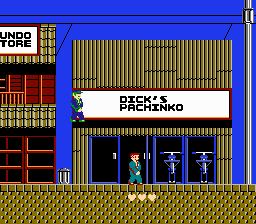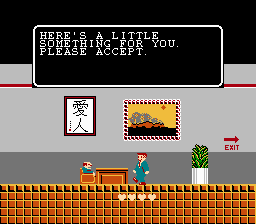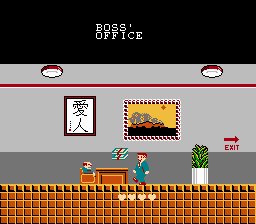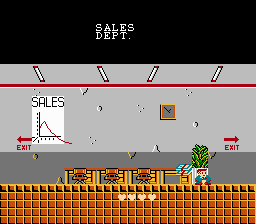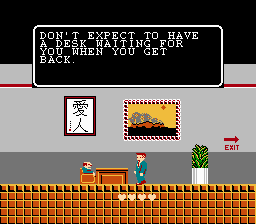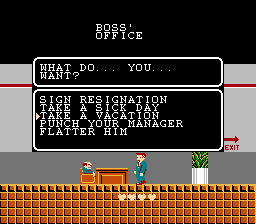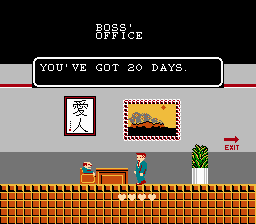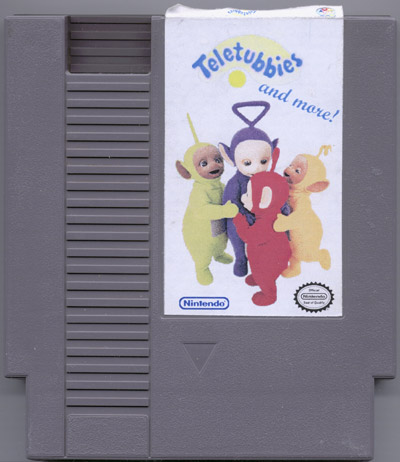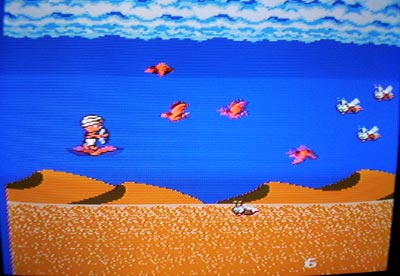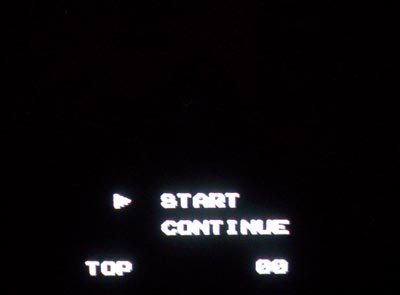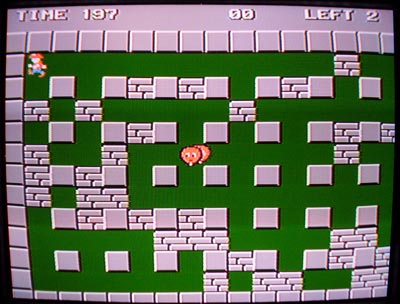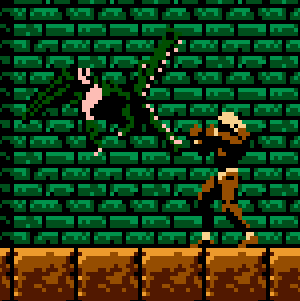War on Wheels
Tuesday, December 31st, 2013Say, it’s been a while since we’ve had a good old-fashioned ROM release. Here’s Jaleco’s canceled War on Wheels for the NES.
Created in a bid to cash in on the brief and inexplicable roller derby resurgence of the late ’80s, War on Wheels paired team-based racing gameplay with hand-to-hand combat mechanics. In the game, players battle opponents as they race around an indoor track, pausing occasionally to pound on rivals in close-up, Blades of Steel-like fight sequences.
By the time War on Wheels was slated to debut in 1991, the roller derby television series Rollergames had ended its first and only season, and young Americans had moved on, priming themselves for a future brimming with pogs and Image Comics.
War on Wheels earned low review scores when it was featured in Video Games & Computer Entertainment magazine, and otherwise received minimal coverage from print publications at the time. The tepid response from reviewers and the waning popularity of roller derby itself prompted Jaleco to cancel the game prior to its release, shelving it alongside other stalled projects like Squashed and Bashi Bazook: Morphoid Masher.
Developed by veteran Amiga studio Sculptured Software, War on Wheels has much in common with Sculptured’s other 1991 NES release Eliminator Boat Duel, and shares the same brand of unappealing character art. The team attempted to spice up the experience with over-the-top brawling and in-game cutscenes, but overall, the project came up short in comparison to contemporary releases like Battletoads and Batman: Return of the Joker. It also failed to live up to the standard set by Konami’s similar 1990 release Rollergames, which had the good sense to wrap its license in the context of a side-scrolling platformer.
War on Wheels is simplistic in execution, with gameplay consisting of skating to the left and attacking opponents while jumping over grooved floor sections. You’ll notice that there’s quite a bit of sprite flicker when there are more than two characters on the screen at once, and characters often tumble over each other on contact, resulting in a jumbled mess of appendages that wink in and out of existence as the NES’s hardware attempts to make sense of the carnage.
Starting in the second period of each match, War on Wheels throws in ramps, floor hazards and other traps, making it play like a more stilted version of Namco’s Metro-Cross. It’s here that the game really starts to drag; you’ll soon find yourself thinking, “Jesus, how many more rounds do I have to play before this thing ends?”
The team dynamic adds some depth to the game, but strategy basically boils down to replacing low-stamina teammates between rounds. It’s not like teamwork plays much of a role during gameplay, anyway. Your teammates occasionally brawl with the competition if they happen to meet on-screen, but otherwise do little to help you score points.
The fight sequences and Double Dribble-inspired cutaways help to break up the action, but otherwise, War on Wheels becomes boring almost immediately. More dynamic presentation might have helped — the game could have thrown in quick transition sequences showing your skater rounding corners, but instead, gameplay drags across the same neverending stretch of track while you hope to god that no one pushes you into a wall, as the AI during the fight sequences is brutally unfair.
Crowd interaction also does little to impact the game, aside from the occasional annoyance at a thrown bottle or bomb hitting your skater in the head and knocking them out for a few seconds. There’s no background music, either, which really helps to drive home the pointlessness of the whole thing.
Despite a strong showing in the first period, the LA Illegals (side note: what the hell?) faltered in the second half, apparently forgetting how to score points as they succumbed to the rubberbanding AI of the Oakland Outlaws. I won’t play this game again, but maybe you’ll get some entertainment out of it. While there are worse games in the NES’s library, we didn’t miss out on anything worthwhile when this one was canceled.
For more tales of Jaleco’s bungling misadventures through the 8-bit era and beyond, check out SCROLL 08.
[Reproduction credit: coinheaven]

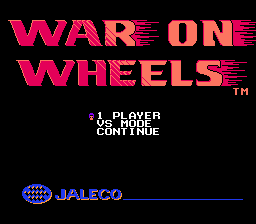
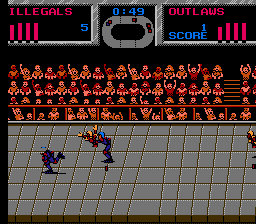


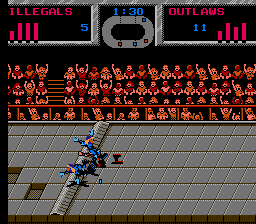
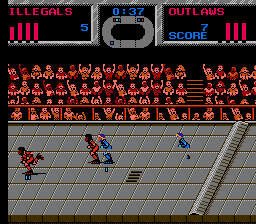
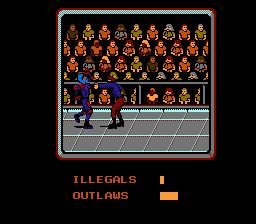
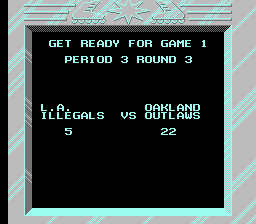
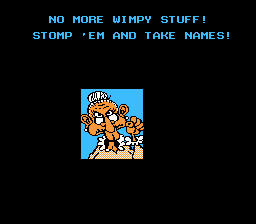





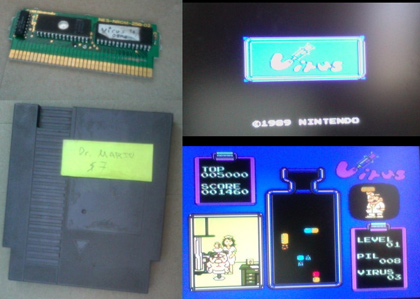


 Â
 
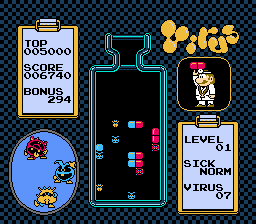 Â
 
 Â
 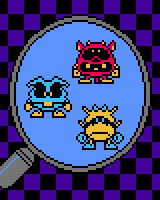

 Â
 
 Â
 

